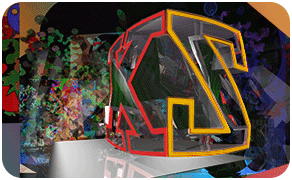Thursday, November 29, 2012
Louis Marcoux Tutorials
Free Master Classes at Autodesk University 2012
Autodesk's Provides Free Video Classes in Connection with AU
Here's an example (for this course you will need to set up a free account with Autodesk. If you've downloaded their software from their Education Community site, use that account:
Animation Methods in Autodesk® 3ds Max®
http://au.autodesk.com/?nd=au_player#1%0:3375
 Presenter: Chris Murray
Presenter: Chris Murray
 Handout
Handout
| Expertise: | Beginner | |
| Product: | Autodesk 3ds Max, Autodesk 3ds Max Design, | |
| Track: | Digital Entertainment Techniques , Educator Summit |
This class is about getting the software to do
what you want it to do. We will explore the way Autodesk 3ds Max
software really handles animation and provides alternatives to straight
key framing. Once we establish the baseline of understanding of
animation in 3ds Max, we will then veer off into the world of
controllers, constraints, parameter wiring, and the Reaction Manager.
This class will broaden the horizons of beginning animators or animators
who are new to 3ds Max.
- Choose and change the animation controllers in 3ds Max
- Use parameter wiring to control objects without directly animating them
- Create a custom Reaction Manager setup to drive custom rigs
- Describe the tools and utilities that 3ds Max provides for controlling animation parameters
Reveal Techniques and Autodesk University in Las Vegas
Reveal Animation Techniques in 3ds Max.
Once again Louis Marcoux offers a series of elegant tutorials as videos. These are from a class he gave at Autodesk University in 2007 using 3ds Max 2008. The class was about animation techniques to reveal models over time. Various techniques were covered with examples in the class. This gives a good idea of the type of classes offered at Autodesk University, which took place this week in Las Vegas. These tutorials can be found at http://area.autodesk.com/blogs/louis/reveal_techniques_and_autodesk_university_in_las_vegasReveal with Masks
In this video, you'll see how to use materials and animated gradient masks to make object draw themselves on the screen.
Reveal with Pro-Booleans
Here, you'll see how to use Pro-Booleans to animate subtractions on
objects to make them appear on screen. With Pro-Booleans, UV Maps and
materials are preserved on cut surfaces which allows very interesting
cut effects as the objects reveal.
Reveal with Loft Objects
Loft objects have deformations curves that can be animated. In this
video, you'll see how to animate the loft curves to make them draw
progressively on the screen.
Reveal with Reactor and Time Distortion
In this video, you'll see how to cut an object in fragments,
simulate their breaking in Reactor and reverse the animation to make the
objects construct themselves for their debris. Note: In 3ds Max 2012, we have Mass f/x (using nVidia's PhysX physics engine) which replaces the Reactor toolset
Reveal with Pflow
See how particles can attach themselves to objects when they find
them. If the particles are flying around and then stick to hidden
object, the objects start to appear. By mixing visibility with
particles, you can create very cool effects of object appearing from
flying dust.
Reveal with Max Script - Parts 1-6 : Offset, Rotation, Animation, Visibility, UI, and Ordering Objects in Arrays,
First part of a series of script techniques that will end with
animated objects all falling into their final position with a simple
button click. This first video covers the basics of moving objects with Max
Script. The second video on scripting techniques covers local rotation with Max Script. The third video on scripting techniques covers the basics of animation keyframing with Max Script. The fourth video on scripting techniques shows how to animate visibility with Max Script. The fifth video on scripting techniques shows how to build an
interface for the animation tool that we have developed in the previous
videos. The sixth 2-part video shows how to
reorder elements in an array based on certain conditions. It will be
helpful to animate blocks of objects based on their relative position.
Tuesday, November 20, 2012
Virtual Production Workflow with Maya 2013
This recent Maya 2013 webinar shows how to use Mudbox and vector displacement, outputting with DX11 support, as well as a few new toys |
|||||
 |
|||||
Virtual Production Workflows with Autodesk Maya Entertainment Creation Suite 2013 Thank you for signing up for last week's Entertainment Webcast hosted by Autodesk Technical Specialists Marcel de Jong. Please join Autodesk® Technical Specialist Marcel deJong for an in-depth look at the exciting new features included in the recently released Autodesk® Maya® Entertainment Creation Suite 2013. See for yourself an Autodesk® Mudbox® to Maya workflow that showcases the DX11 update, including Vector Displacement Maps, all while maintaining performance. You'll see a virtual production workflow using Autodesk® Motionbuilder® and Maya with multiple cameras, HUD's and characters. Don't miss out! We hope you enjoyed the webcast. If you missed it, or simply would like to watch it again, you can access the webcast on-demand by clicking below. |
Download a 30-day trial of Autodesk® Maya® 2013 3D modeling, animation, and rendering software. Learn More
|
||||
© Copyright 2012 Autodesk, Inc. All rights reserved
Autodesk | Legal Notices & Trademarks | Privacy Policy | |||||
Tuesday, November 13, 2012
Video in Photoshop CS6 - Adobe Video Tutorials
Photoshop's video capabilities were substantially expanded in CS6. You can stitch together and edit video clips, single frame sequences, still images Smart Objects and 3D layers. You can add and animate most of Photoshop's filters (make the layer a smart object), adjustment layers, and layer styles. You can combine this with a single separate audio track (although if the video clip contains audio, you can blend these together). And you can output a resulting video in many including HDTV to YouTube. It's now a simple suitable vehicle for editing simple video, 3D and cell animation.
Joe Alter's -- Some New L Brush Stuff
L Brush is a new sculpt-rigging plugin for Maya. Impressive!
 MMST 3ds Max Class Blog
MMST 3ds Max Class Blog
